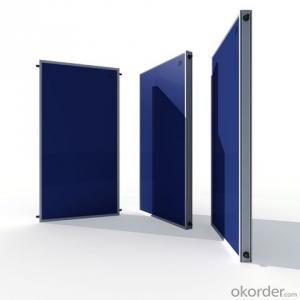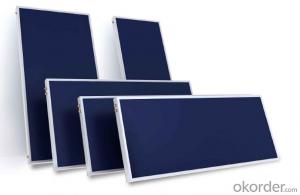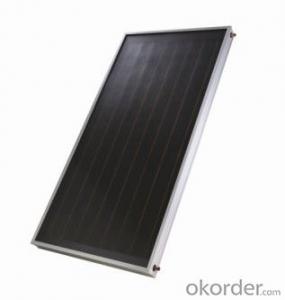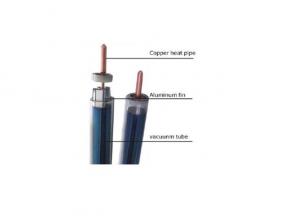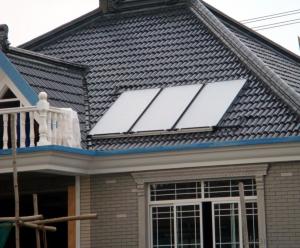Photovoltaic Solar Monocrystalline Series Panels
- Loading Port:
- Tianjin
- Payment Terms:
- TT OR LC
- Min Order Qty:
- 1 pallet
- Supply Capability:
- 100000000 pallet/month
OKorder Service Pledge
OKorder Financial Service
You Might Also Like

Product Description:
Solar Monocrystalline Series Panels
Introduction of Solar Monocrystalline Series Panels
CNBM Solar photovoltaic (PV) Panel is designed for large electrical power requirements. It is the optimal choice for both on-grid and off-grid power systems. CNBM Solar panel offers high performance of power per square foot of solar array. Monocrystalline silicon(c-Si): often made using the Czochralski process. Single-crystal wafer cells tend to be expensive, and because they are cut from cylindrical ingots, do not completely cover a square solar cell module without a substantial waste of refined silicon. Hence most c-Si panels have uncovered gaps at the four corners of the cells.
Characteristics of Solar Monocrystalline Series Panels
I Solar Cell : High efficiency crystalline solar cell. Even if under the weak light, the solar module can produce maximum power output.
II Tempered glass (toughened glass): Anti-reflecting coating and high transmission rate glass increase the power output and mechanical strength of solar module.
III EVA and TPT: Using high quality EVA and TPT to prevent destroying and water.
IV AI frame: Without screw, corner connection. 6 holes on the frame can be installed easily.
V Junction box: Multi function junction box with water proof.
VI Long lifetime: ≥25 years; Less power decrease
VII Good performance of preventing from atrocious weather such as wind and hails.
VIII Resisting moisture and etching effectively, not effected by geology.
Standard Test Conditions of Solar Monocrystalline Series Panels
The opto-electrical specifications shown below are stabilized values being measured at Standard Test Conditions, Irradiance: 1000W/m2, Spectrum: AM1.5 at 25°C, The info below is subject to manufacturing tolerances. Where appropriate minutes of measurement are available and are used for the dimensioning of the installation.
Advantages of Solar Monocrystalline Series Panels
• CNBM Solar performance guarantees for 25 years
• 12 years guarantee for workmanship
• Timeliness of delivery
CNBM International Corporation's products including Monocrystalline Solar Panel, Polycrystalline Solar Panel have received and enjoyed famous reputation in many countries and regions in the world .As a solar panel supplier in China, we strive to provide our customers with excellent service, superior products and unmatched value.
Characteristics of Solar Monocrystalline Series Panels
Max Power Voltage Vmp (V) | 18.4V | 17.6V |
Max Power Current Imp (A) | 6.52A | 7.39A |
Open Circuit Voltage Voc (V) | 23.0V | 22.2V |
Short Circuit Current Isc (A) | 6.97A | 7.90A |
Max Power Pm (W) | 120W | 130W |
Temperature Coefficient of Cells
NOCT | 47℃±2℃ |
Temperature Coefficients of Isc (%/℃) | 0.064 |
Temperature Coefficients of Voc (%/℃) | -0.33 |
Temperature Coefficients of Pmp (%/℃) | -0.45 |
Mechanical Data Solar Monocrystalline Series
Power | 120W/130W |
Dimension | 1190/1470×670×30mm |
Weight | 9.5kg/11.7kg |
Tolerance | ±3% |
The dimension of the modules can be changed according to the demand of clients
Limits
Operating Temperature | –40 °C to +85°C |
Storage Temperature | –40 °C to +85°C |
Max System Voltage | 700V |
Guarantee Solar Monocrystalline Series Panels
Products Guarantee | 10 yrs free from defects in materials and workmanship |
Performance Guarantee | No less than 90% within 10yrs and no less than 80% within 25yrs |
Certificates | IEC, ISO, TUV, CE |
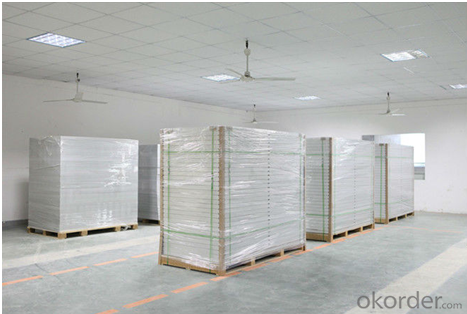
FAQ
We have organized several common questions for our clients,may help you sincerely:
1. What’s price per watt?
A: It’s depends on the quantity, delivery date and payment terms of the order. We can talk further about the detail price issue. Our products is high quality with lower price level.
2. Can you tell me the parameter of your solar panels?
We have different series of cells with different power output, both from c-si to a-si. Please take our specification sheet for your reference.
3. How do you pack your products?
We have rich experience on how to pack the panels to make sure the safety on shipment when it arrives at the destination.
4. Can you do OEM for us?
Yes, we can.
5. How long can we receive the product after purchase?
In the purchase of product within three working days, We will arrange the factory delivery as soon as possible. The perfect time of receiving is related to the state and position of customers. Commonly 7 to 10 working days can be served.
- Q:Are solar collectors suitable for military applications?
- Yes, solar collectors are suitable for military applications. They provide a reliable and sustainable source of energy that can power various military equipment, including communication systems, surveillance devices, and remote outposts. Solar collectors are portable, easy to deploy, and require minimal maintenance, making them ideal for military operations in remote and challenging environments. Additionally, their use reduces the reliance on traditional fuel sources, enhances operational flexibility, and promotes energy independence for military forces.
- Q:Do solar collectors work on cloudy days?
- Solar collectors do work on cloudy days, although their efficiency may be reduced. Cloud cover can decrease the amount of sunlight reaching the solar panels, resulting in a lower energy output. However, solar collectors can still generate electricity or heat water as they can absorb diffused sunlight even through clouds.
- Q:Can solar collectors be used to generate electricity for grid-connected applications?
- Solar collectors have the capability to generate electricity for grid-connected applications. These collectors, also referred to as solar panels or photovoltaic (PV) panels, convert sunlight directly into electrical energy using the photovoltaic effect. The resulting electricity can be utilized to power various grid-connected applications such as homes, businesses, and other establishments. The term "grid-connected applications" pertains to the integration of solar power into the existing electrical grid system. When solar panels produce electricity, it can be consumed on-site to fulfill the immediate energy requirements of the connected building or facility. Any surplus electricity that is not immediately used can be fed back into the grid. To facilitate the integration of solar power into the grid, net metering and feed-in tariff programs are often established. Net metering enables owners of solar panels to receive credits for the excess electricity they generate. These credits can then be used to offset the electricity they draw from the grid when solar production is insufficient, such as during nighttime or cloudy days. On the other hand, feed-in tariff programs provide a fixed payment rate for the solar electricity that is fed back into the grid. By making use of solar collectors, grid-connected applications can take advantage of renewable and environmentally-friendly energy sources. This reduces dependence on fossil fuels and contributes to a more sustainable energy future.
- Q:How do flat plate solar collectors work?
- Flat plate solar collectors work by capturing the sun's heat energy through a dark-colored plate, typically made of metal, which absorbs the sunlight. This absorbed heat is then transferred to fluid circulating through pipes or channels within the collector. The fluid, usually water or an antifreeze solution, then carries the heat to a storage tank or directly to a target application like space heating or hot water. The collector is designed with a transparent cover, usually glass or plastic, which allows sunlight to pass through but traps the heat inside, creating a greenhouse effect. This process allows flat plate solar collectors to efficiently convert solar energy into usable heat for various residential, commercial, and industrial purposes.
- Q:Can solar collectors be used for generating electricity on electric cars?
- Solar collectors have the ability to generate electricity for electric cars. Integrating solar panels or collectors onto electric vehicles is becoming more popular in order to increase the battery's range and efficiency. These solar panels are typically placed on the car's roof or hood and are able to capture sunlight and convert it into electricity. This electricity can then be used to power different electrical components of the car, reducing the dependence on the main battery. Although the amount of electricity generated by solar collectors on a moving vehicle is relatively small, it can still contribute to extending the electric car's range and decreasing overall energy consumption. Furthermore, when the vehicle is parked or not in motion, the solar collectors can continue producing electricity, which can be used to charge the battery or operate other systems. However, it is important to note that the effectiveness and efficiency of solar collectors on electric cars can vary depending on factors such as the panel size, sunlight angle, and overall vehicle design. Nevertheless, the utilization of solar collectors on electric cars shows promise in further harnessing renewable energy and improving the sustainability of transportation.
- Q:Can solar collectors be used in parking lots?
- Yes, solar collectors can be used in parking lots. They can be installed on carports or canopies above the parking spaces, allowing for the collection of solar energy while providing shade and shelter for vehicles. This integration of solar collectors in parking lots helps generate clean, renewable energy while utilizing otherwise unused space.
- Q:Can solar collectors be used for process heat in the manufacturing industry?
- Yes, solar collectors can be used for process heat in the manufacturing industry. Solar thermal systems can provide a sustainable and renewable source of heat energy for various industrial processes, such as heating liquids, drying materials, or generating steam. By harnessing the power of the sun, solar collectors can reduce reliance on fossil fuels, lower carbon emissions, and contribute to a more environmentally friendly manufacturing process.
- Q:Can solar collectors be used in art installations?
- Yes, solar collectors can be used in art installations. They can serve as both functional and aesthetically pleasing elements, harnessing solar energy for various purposes while adding an innovative and sustainable touch to the artwork.
- Q:Can solar collectors be used in hurricane-prone areas?
- Yes, solar collectors can be used in hurricane-prone areas with proper design and installation considerations. The collectors should be securely mounted to withstand strong winds and potential debris impact. Additionally, regular maintenance and inspection will help ensure their functionality and durability in such challenging weather conditions.
- Q:Can solar collectors be used in areas with high wind speeds?
- Yes, solar collectors can be used in areas with high wind speeds. However, it is important to consider the design and installation of the collectors to ensure their stability and functionality in such conditions.
1. Manufacturer Overview |
|
|---|---|
| Location | |
| Year Established | |
| Annual Output Value | |
| Main Markets | |
| Company Certifications | |
2. Manufacturer Certificates |
|
|---|---|
| a) Certification Name | |
| Range | |
| Reference | |
| Validity Period | |
3. Manufacturer Capability |
|
|---|---|
| a)Trade Capacity | |
| Nearest Port | |
| Export Percentage | |
| No.of Employees in Trade Department | |
| Language Spoken: | |
| b)Factory Information | |
| Factory Size: | |
| No. of Production Lines | |
| Contract Manufacturing | |
| Product Price Range | |
Send your message to us
Photovoltaic Solar Monocrystalline Series Panels
- Loading Port:
- Tianjin
- Payment Terms:
- TT OR LC
- Min Order Qty:
- 1 pallet
- Supply Capability:
- 100000000 pallet/month
OKorder Service Pledge
OKorder Financial Service
Similar products
New products
Hot products
Related keywords









